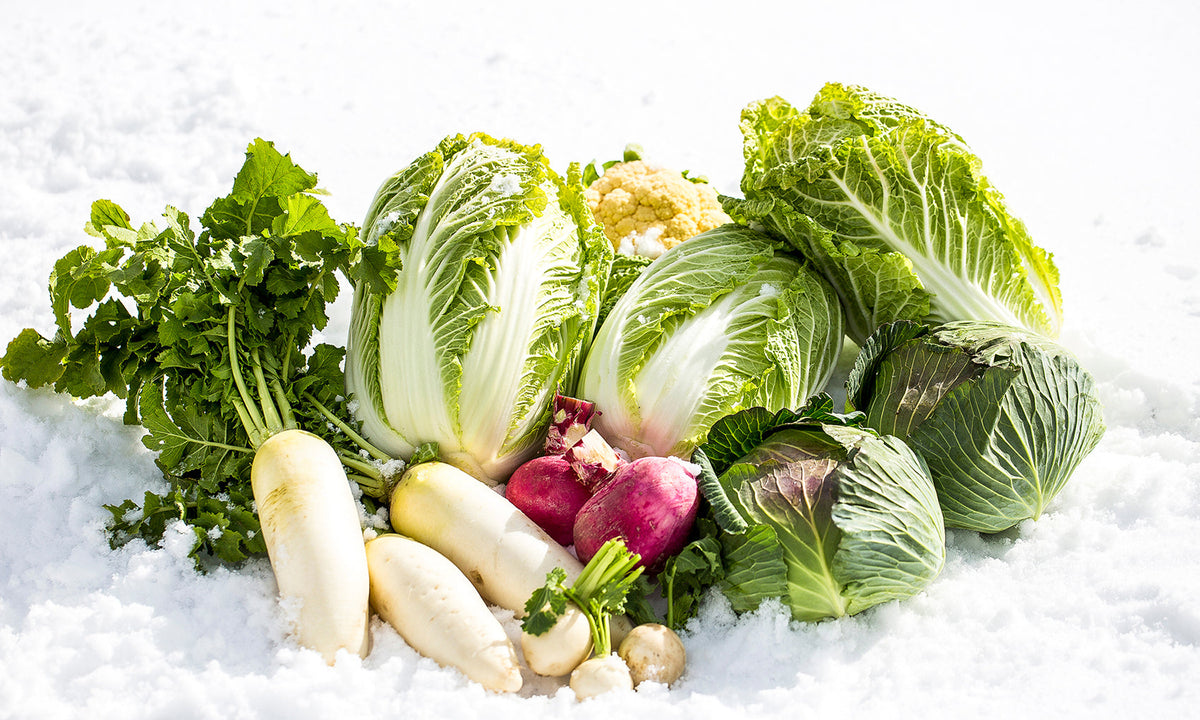I look forward to getting started 😄

As winter blankets the landscape, many gardeners tuck away their tools and dream of the upcoming spring. However, there's a gardening method that defies the frosty weather and allows you to get a head start on the growing season – winter sowing, also known as milk jug gardening. In this comprehensive Seed Armory guide, we'll explore the wonders of winter sowing and introduce you to the new winter sowing seed vault, a treasure trove of 20 seeds perfectly curated for cold weather cultivation.
It's particularly beneficial for hardy plants that thrive in cooler temperatures and those requiring a period of cold stratification. The process aligns with the natural growth cycles of resilient vegetables, making it an efficient and eco-friendly way to kickstart your winter sowing.
To start off your winter sowing endeavors, also known as milk jug gardening, we recommend starting outdoors in mini greenhouses crafted from recycled containers. Especially effective for hardy plants and those requiring cold stratification, this method aligns with the growth cycles of resilient vegetables. To get started, collect clean, translucent, seal-able containers like:
Prepare them by adding drainage holes and ventilation openings, and label each with plant details using a waterproof marker. Use a quality potting mix, sow seeds at the recommended depth, water gently, and seal the containers. Place them outdoors in a suitable spot, exposed to rain and snow but protected from strong winds. Label each container with the name of the plant and the sowing date using a waterproof marker. This is crucial for keeping track of what you've planted while winter sowing.
Read on to understand the step-by-step process of sowing seeds for your winter sowing this cold season:
Water the Seeds: Gently water the seeds in. The soil should be moist but not waterlogged.
Seal the Containers: Close the lids or cover the containers. If you've cut the containers, use duct tape to seal the edges but leave the top hinge open for ventilation.
Place Containers Outside: Place the containers outside in a spot where they'll be exposed to rain and snow but not to high winds or heavy foot traffic. Ensure they receive sufficient sunlight as the days lengthen.
Monitor and Care: Check the containers periodically. They may need additional watering if the soil starts to dry out, especially as temperatures rise in the spring.
Effective watering is crucial for successful winter sowing. While the cold weather reduces the evaporation rate, it's essential to maintain consistent moisture levels to support seed germination and seedling growth. Follow these tips for efficient watering during winter:
Our perfect Winter Sowing Seed Vault offers a unique and efficient way to start growing seeds in the cold winter season. Packed in resealable mylar packages, this seed vault includes 20 of our 100% heirloom, non-GMO seeds that are resilient against frosty tundra temperatures. This group, including Asparagus, Beets, Broccoli, Brussel Sprouts, various Cabbages, Carrots, Cauliflower, Collard Greens, different types of Kale and Lettuce, Onions, Radish, and Spinach, thrives in cooler temperatures and benefits from the freeze-thaw cycles of winter. Learn why heirloom seeds are best, according to doitgreen.org, when starting your survival garden.
The success of winter sowing and gardening hinges on careful monitoring and care. Regular checks ensure proper moisture levels, and as spring approaches, seedlings can be transplanted into the garden after being gradually exposed to outside conditions in your winter sowing endeavors. The method is versatile but success may vary based on local climate and specific plant needs.
Included in this curated seed vault is winter resilient seeds from our list above that is included in our winter seed vault. All our 100% heirloom, non-GMO seeds have been selected for their resilience to cold and compatibility with winter sowing. These vegetables thrive in cooler temperatures, benefiting from the freeze-thaw cycles of winter. Moreover, the use of recycled containers makes winter sowing an eco-friendly and cost-effective gardening approach, ideal for early-season planting with sustainability in mind.
Winter Seed Sowing is not just a winter sowing technique; it's a testament to the resilience of nature and the ingenuity of gardeners. With the Winter Sowing and Sowing Seed Vault, you have the tools to embark on a winter sowing journey that yields flavorful, homegrown produce even in the coldest months. Embrace the chill, sow your seeds, pay attention to your watering techniques, and watch your winter sowing endeavors thrive. Happy winter sowing!
Comments
I look forward to getting started 😄


